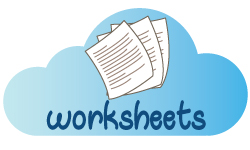Clauses | Definitions, Types, and Examples
- Grammar Lessons >
- Clauses
Overview of Clauses:
- What Is a Clause?
- Difference Between Clauses and Phrases
- Examples of Clauses and Phrases
- Examples of Clauses in Sentences
- Types of Clauses
- Independent Clauses
- Dependent Clauses
- Connecting Independent Clauses
- Connecting Dependent Clauses to Independent Clauses
- Other Types of Clauses
- Noun Clauses
- Adjectival Clauses
- Restrictive and Nonrestrictive Clauses
- That vs Which
- Adverbial Clauses
- Clauses - Quiz
What Is a Clause?
A clause is a group of words that contains a subject and a verb. Clauses are the smallest grammatical units that express a thought.
Examples:
although it was raining
John went out to play
who is a fish merchant
which all of us agree with
as soon as it stopped raining
how the story is told
Difference Between Clauses and Phrases
While a clause has a subject and a verb, a phrase doesn't.
Examples of Clauses and Phrases
a bunch of American boys. (This is a group of words with no subject and verb, and so it's a phrase.)
They are a bunch of American boys. (This is a group of words with a subject and a verb, and so it's a clause.)
Reading two books every month (This is a group of words with no subject and verb, and so it's a phrase.)
Though he reads two books every month (This is a group of words with a subject and a verb, and so it's a clause.)
Examples of Clauses in Sentences
The victorious students, whose entries have been selected for publication, will be awarded tonight.
Mom wanted to take us to the park, but there were no tickets available.
The teacher explained how I should prepare the assignment.
Types of Clauses
Bases on whether it can stand alone or not, a clause can be independent or dependent.
Independent Clauses
An independent clause conveys a complete meaning on its own. As well as being part of a sentence containing one or more independent clauses or an independent clause combined with one or more dependent clauses, an independent clause can also function as an independent or a complete sentence.
Examples:
New York is a very old dining city in the country. (This is an example of an independent clause forming an independent sentence.)
If you want to eat steak, you can choose from one of its legendary steakhouses. (This is an example of an independent clause used along with a dependent clause to make a sentence)
There is no best restaurant here, for each restaurant is the best in its own way. (This is an example of two independent clauses forming a single sentence.)
Dependent Clauses
A dependent clause depends on the independent clause to convey a complete meaning. Unless it's accompanied by an independent clause, a dependent clause will be considered a sentence fragment.
Examples:
Kevin will continue to spend time at the New York Society Library until he has mastered the topic.
Although the library has millions of books in its labyrinth stacks, the management has decided to buy more books.
(In both sentences, the underlined part is a dependent clause. It makes sense only when combined with the rest of the sentence, which is an independent clause.)
Connecting Independent Clauses
We use a comma and a coordinating conjunction to connect two independent clauses.
Example:
The country has produced loads of phenomenal athletes, so compiling a list of the famous athletes is no easy task. (The two independent clauses are connected using a comma and the coordinating conjunction so.)
Another way to connect independent clauses is by using a semicolon.
Example:
Serena Williams is a highly successful tennis player; she owes a great deal of her success to the exceptional physical and mental strength that she is known for. (The two independent clauses are connected using a semicolon.)
There is yet another way to connect independent clauses; we can use a semicolon and a conjunctive adverb.
Example:
The player has experienced many setbacks in his life; nevertheless, he has played exceptionally well.
Connecting Dependent Clauses to Independent Clauses
When the sentence starts with a dependent clause, separate the clauses with a comma.
Example:
If you want to furnish your home on the cheap, this store is ideal for you.
When the sentence starts with the independent clause, don't use a comma to separate the clauses.
Example:
This store is ideal for you if you want to furnish your home on the cheap.
Other Types of Clauses
We are now going to discuss noun clauses, adjectival clauses, and adverbial clauses.
Noun Clauses
A noun clause is a type of dependent clause that acts as a noun. Noun clauses start with words like how, that, what, when, where, and so on.
Examples:
Do you know what we have for dinner today?
That the museum offers a unique experience attracts people to it.
I got to discover how glorious our history is.
Whichever food you order is fine for me.
The Function of Noun Clauses
A noun clause can function as a subject, object, or complement in a sentence.
Examples:
Whoever wrote this has a gift for writing. (The noun clause Whoever wrote this is used as a subject.)
The teacher explained how we could write an effective introduction. (The noun clause how we could write effective introduction is used as a direct object.)
The truth is that we have been asked to turn in the assignment by Monday. (The noun clause that we have been asked to turn in the assignment by Monday is used as a subject complement.)
Adjectival Clauses
An adjectival clause is a type of dependent clause that acts as an adjective in a sentence. Adjectival clauses begin with words such as who, that, whom, which, whose, why, and so on.
Examples:
New York's forest industry, which employs more than 60,000 people, greatly contributes to the state's economy.
The main reason why forests are important is that they house 80% of our terrestrial biodiversity.
Climate change is a major problem that threatens urban forests.
Restrictive and Nonrestrictive Clauses
Every adjectival clause is either restrictive (essential) or nonrestrictive(nonessential).
Restrictive Clauses
The information provided by a restrictive clause is necessary to identify the word it modifies. Restrictive clauses start with words like that, who, whom, whose, when, and so on.
Examples:
Aldrin is one of the students who will represent us in this year's math fair. (The adjectival clause who will represent us in this year's math fair is restrictive as it's necessary to identify which students we are talking about.)
This is the park that we are going to visit tomorrow. (The adjectival clause that we are going to visit tomorrow is restrictive as it's necessary to identify which park we are talking about.)
Nonrestrictive Clauses
The information provided by a nonrestrictive clause is only additional and not really necessary to identify the word it modifies. Nonrestrictive clauses start with words like which, who, and so on and are set off with commas.
Examples:
New York, which is a famous American city, is home to over 8 million people. (The nonrestrictive clause which is a famous American city is not essential to identify New York here. It is therefore set off with commas.)
Mr. Baker, who is currently the school principal, will retire next year. (The nonrestrictive clause who is currently the school principal is not essential to identify Mr. Baker here. It is therefore set off with commas.)
That vs Which
We use "that" to introduce a restrictive clause and "which" to introduce a nonrestrictive clause.
Examples:
This is the restaurant that opened last week. (The clause that opened last week is essential and is therefore introduced with that.)
The New York Public Library, which has over 50 million books, is the second largest library in the nation. (The clause which has over 50 million books is nonessential and is therefore introduced with which.)
The Function of Adjectival Clauses
The main advantage of a clause over a phrase is that a clause adds depth and insight to your writing. By providing further relevant details about the nouns or pronouns that they modify, adjectival clauses work to make writing a richer and more insightful experience.
Examples:
This is our English teacher. (Phrase)
This is the teacher who teaches us English. (Adjectival clause)
Nathan flashed his Swiss watch. (Phrase)
Nathan flashed the watch that he bought while he was holidaying in Switzerland with his parents. (Adjectival clause)
The idea can be communicated in two ways as above. Reading both sentences, aren't you convinced that the second sentence, which has used an adjectival clause instead of a phrase, is more grammatically interesting and therefore more effective? The reason is by adding clear details to the noun the teacher and the watch, the sentences drive home the point with twice the success.
Adverbial Clauses
An adverbial clause is a type of dependent clause that acts as an adverb in a sentence. Like adverbs, adverbial clauses modify verbs, adjectives, or adverbs. Adverbial clauses begin with words like because, although, since, and while.
Examples:
Because she worked hard, Martha got excellent grades in the exam.
Since I now have a car, it has become easy for me to travel to and from work.
While Irene watered the plants, Cindy mowed the lawn.
The Function of Adverbial Clauses
An adverbial clause can modify a verb, an adjective, or an adverb.
Examples:
After we reached New York City, Dad took us to a nearby restaurant for lunch. (The adverbial clause after we reached New York City modifies the verb took.)
Mom's cookies are the most delicious because she uses the most chocolate. (The adverbial clause because she uses the most chocolate modifies the adjective best.)
We are planning to visit the park tomorrow when Grandma comes home. (The adverbial clause when Grandma comes home modifies the adverb tomorrow.)
Take a Clauses Quiz Now!

Hone your skills using our free printable Clause Worksheets.

